
Where We Be
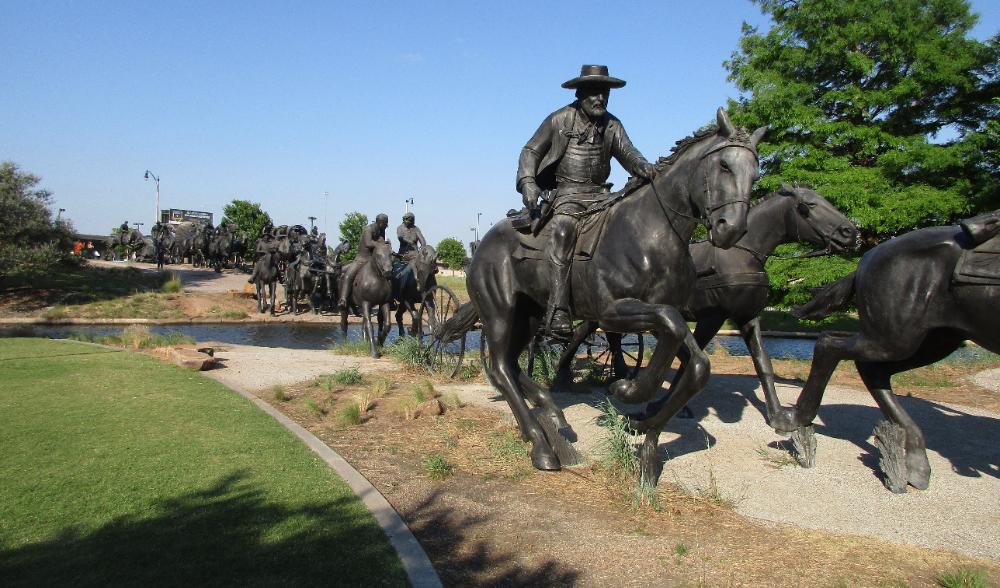
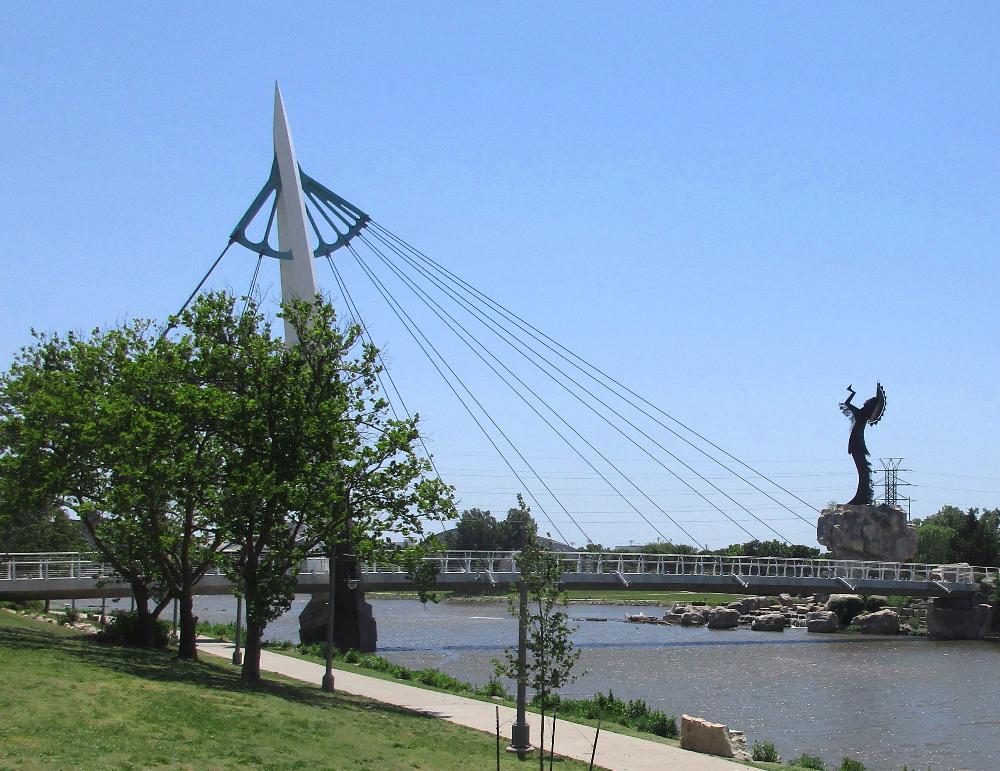
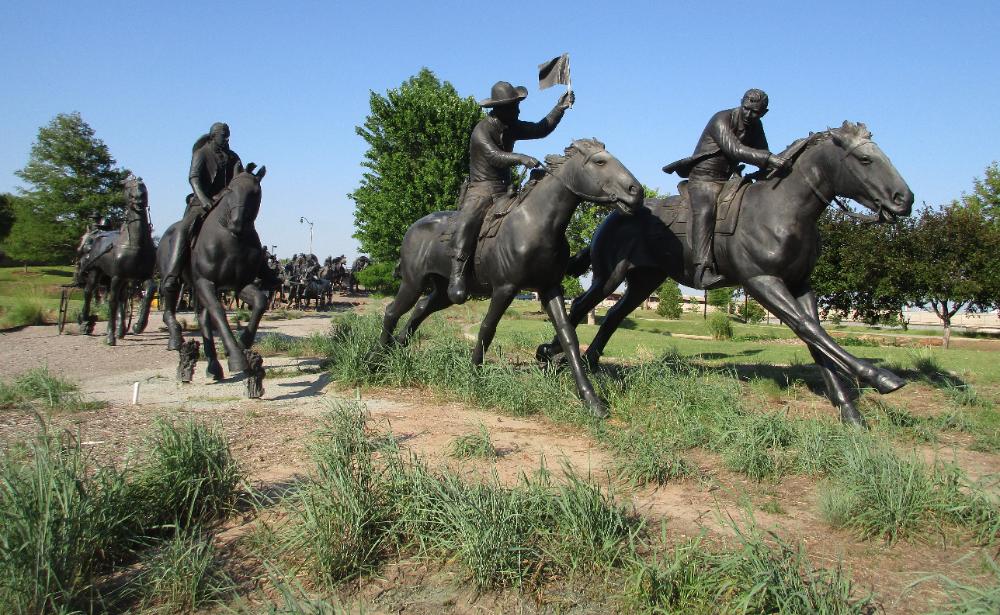
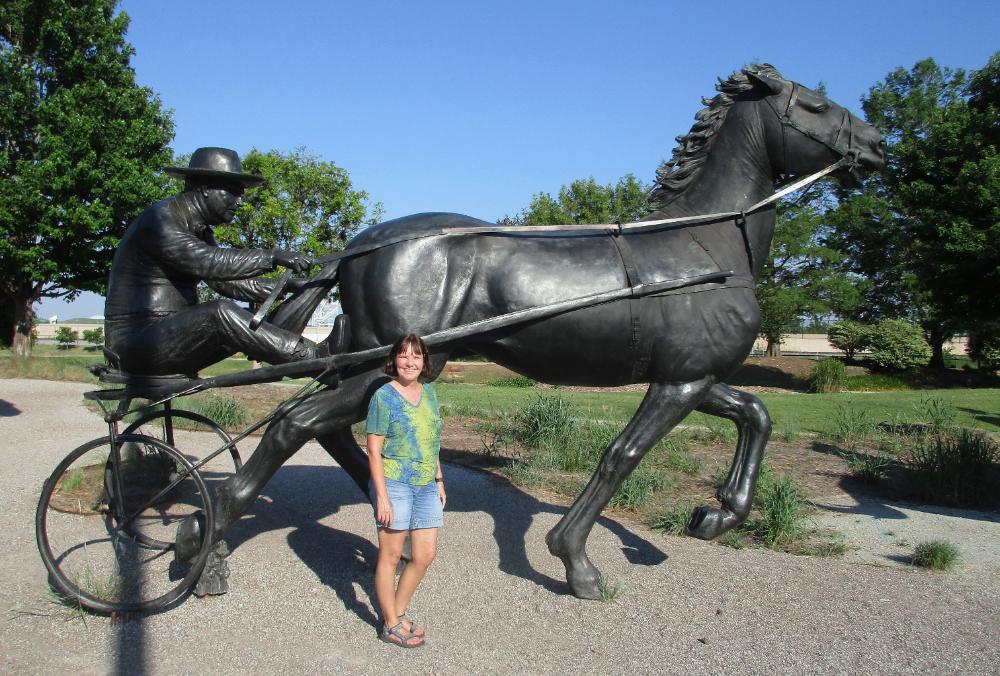
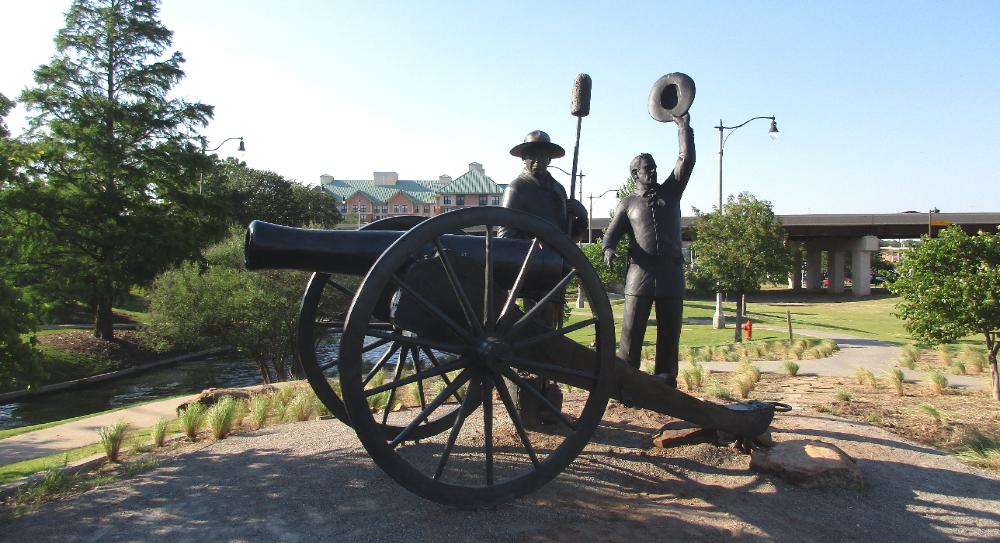
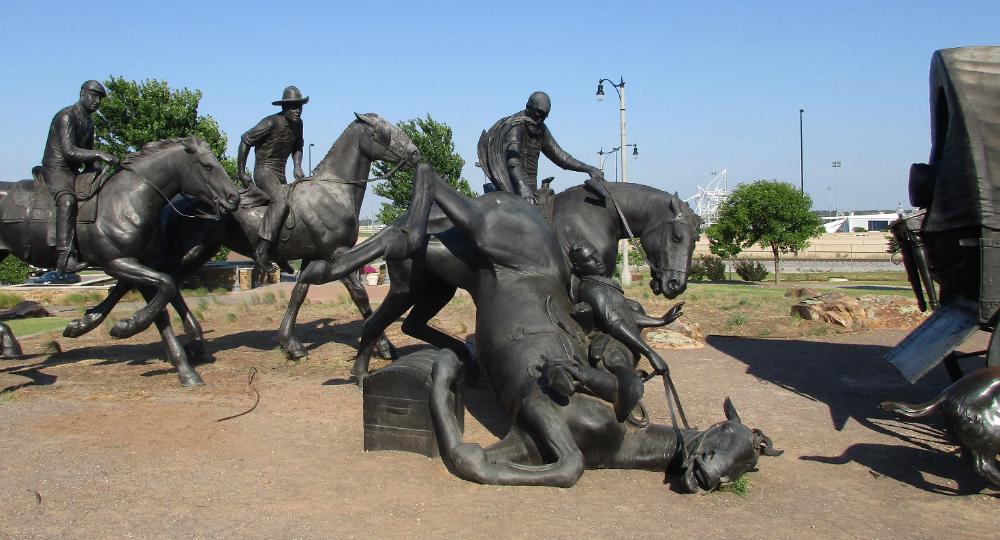
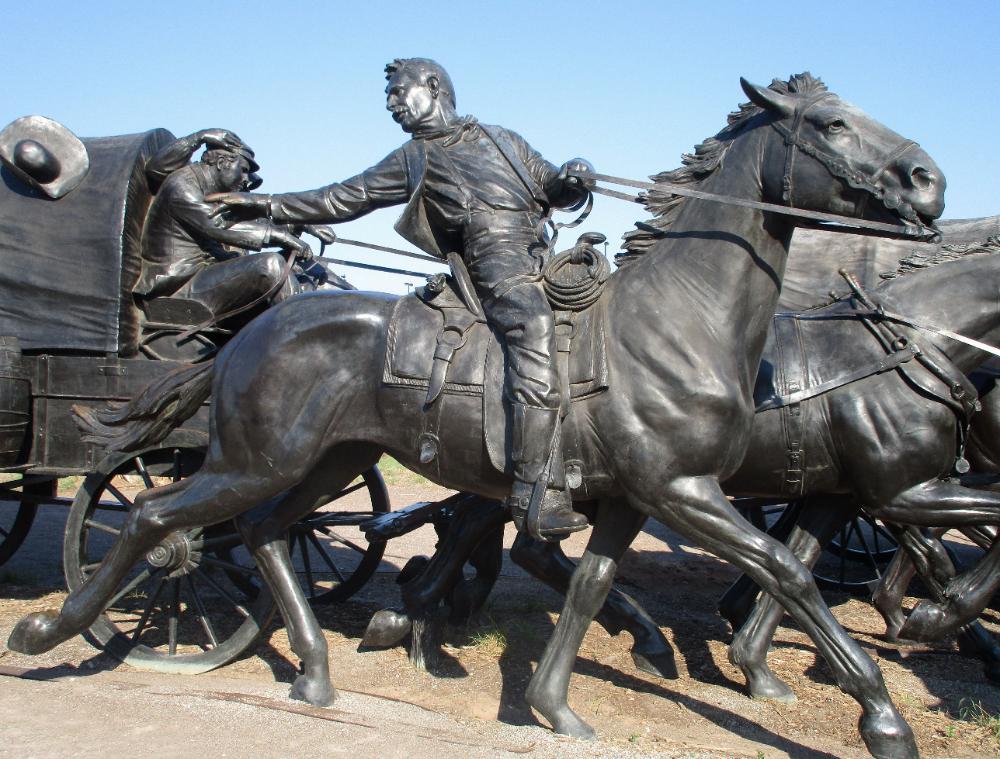
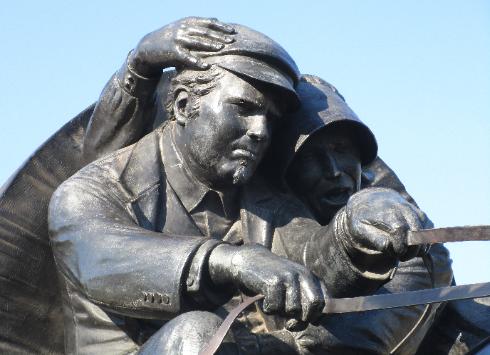
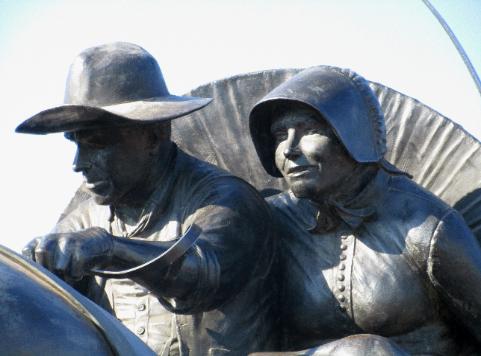
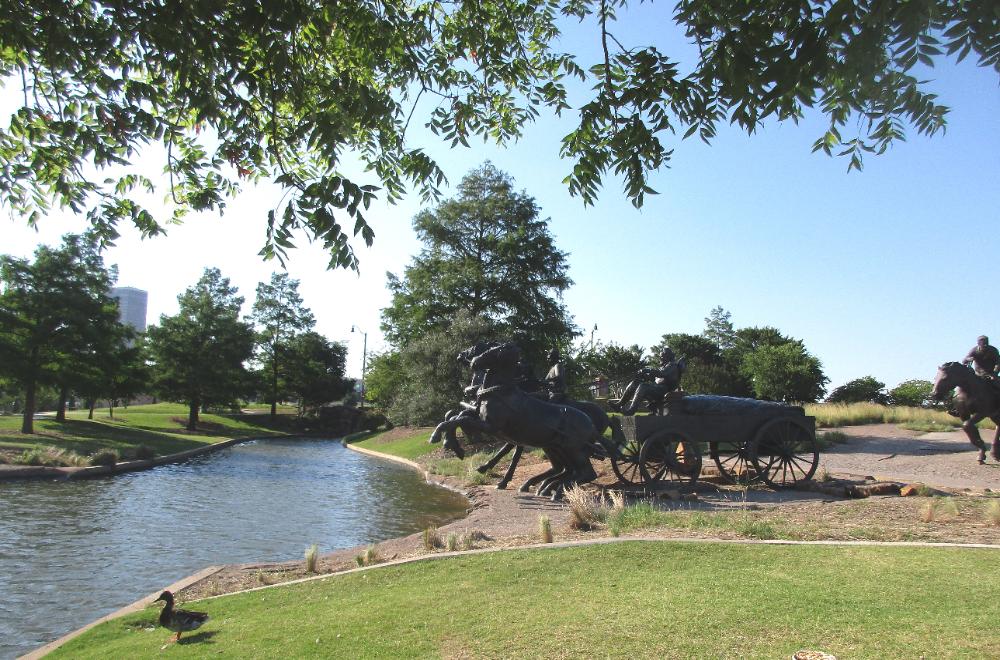
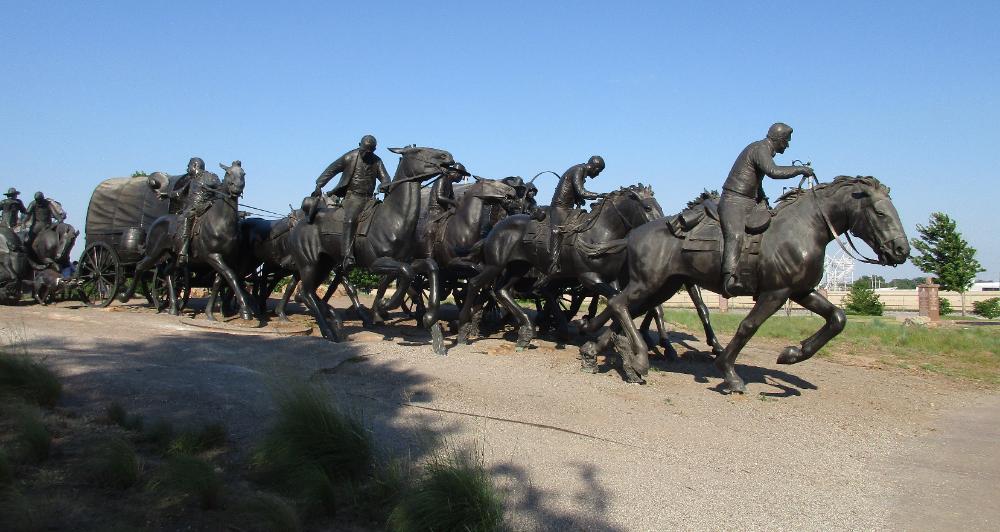
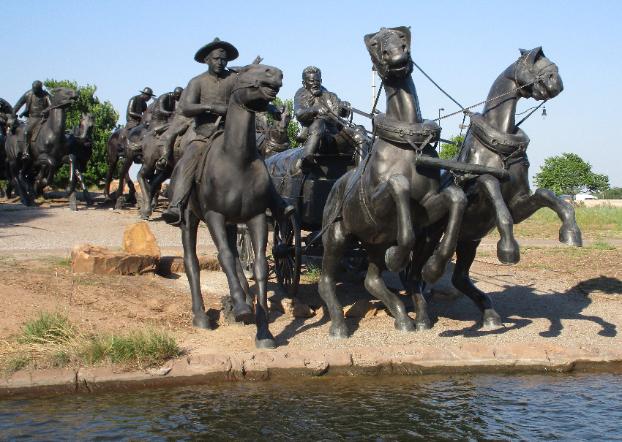
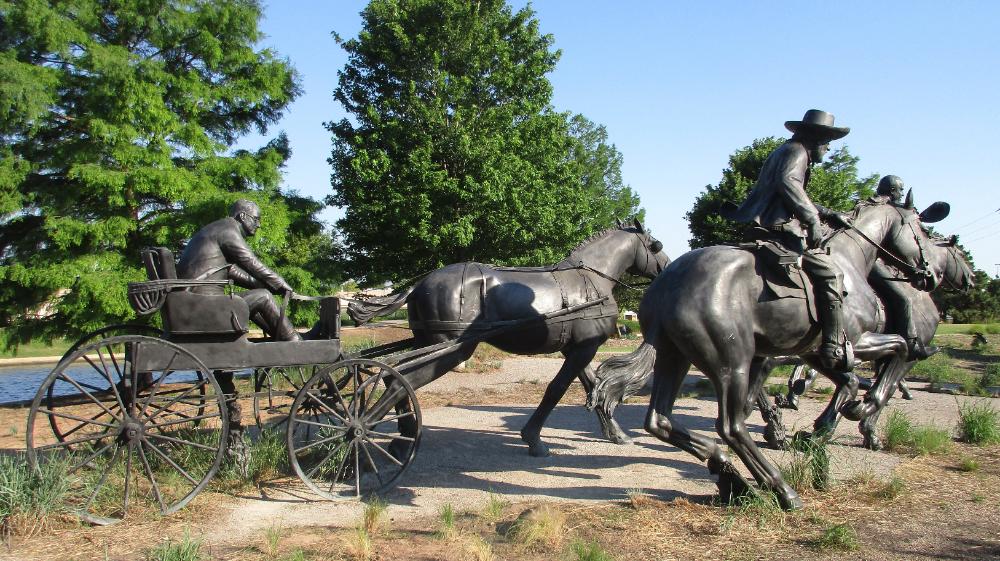
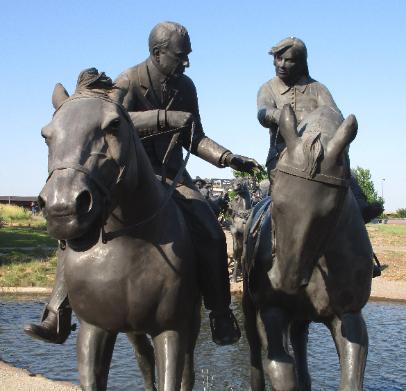
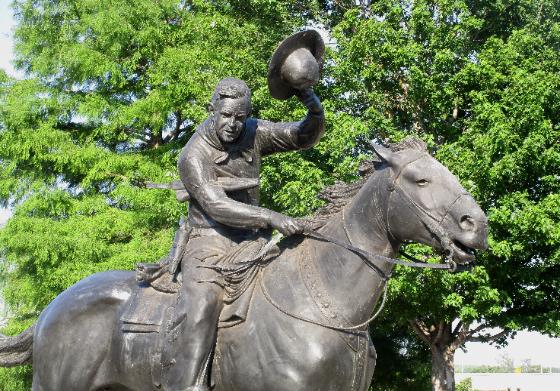
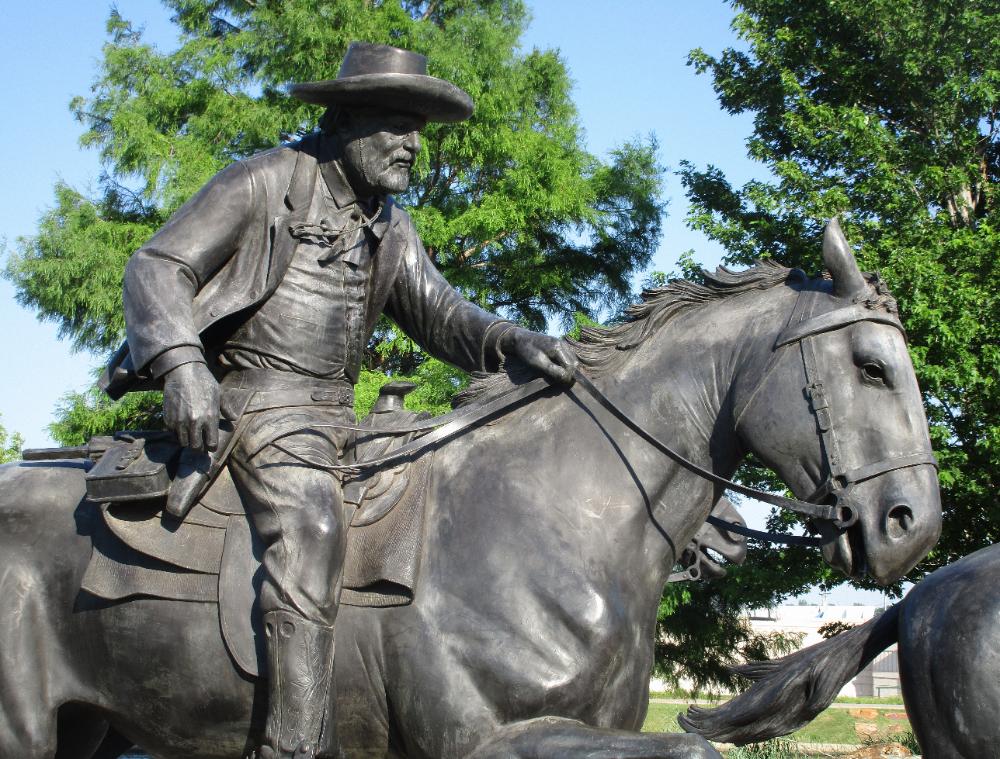
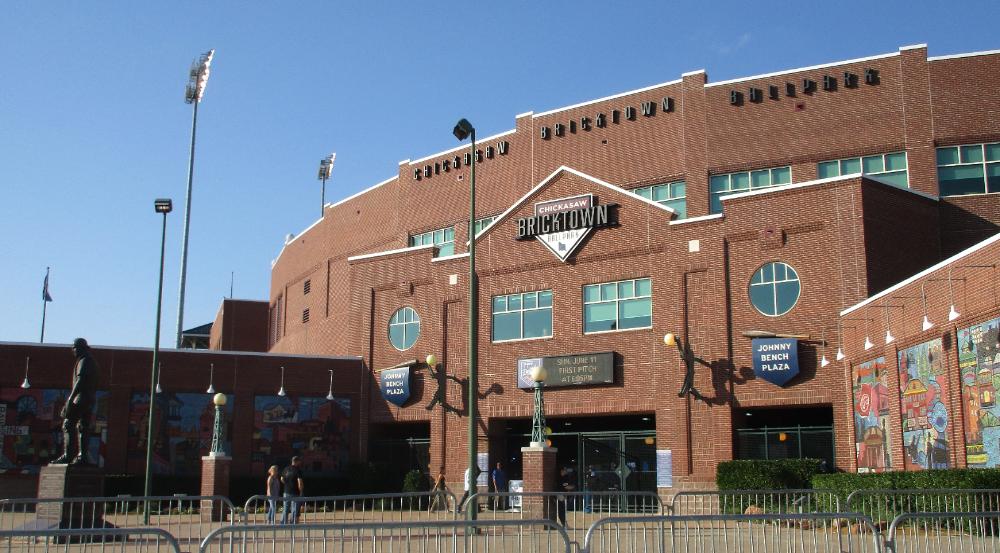
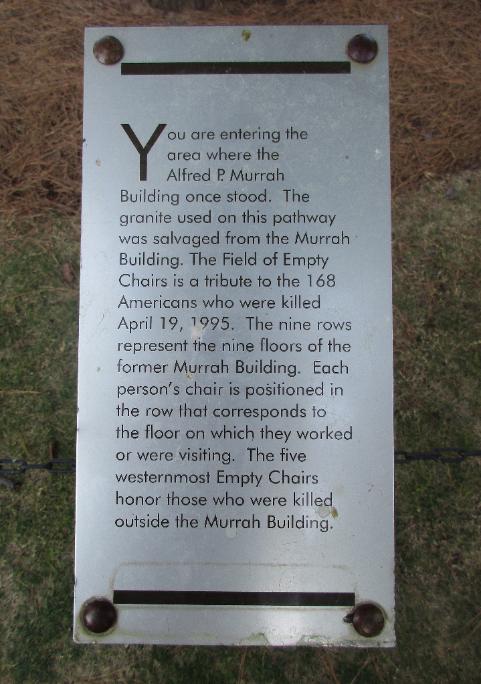
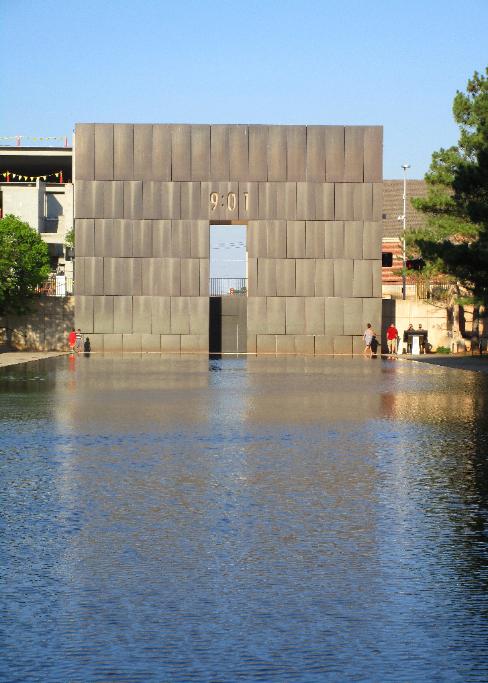
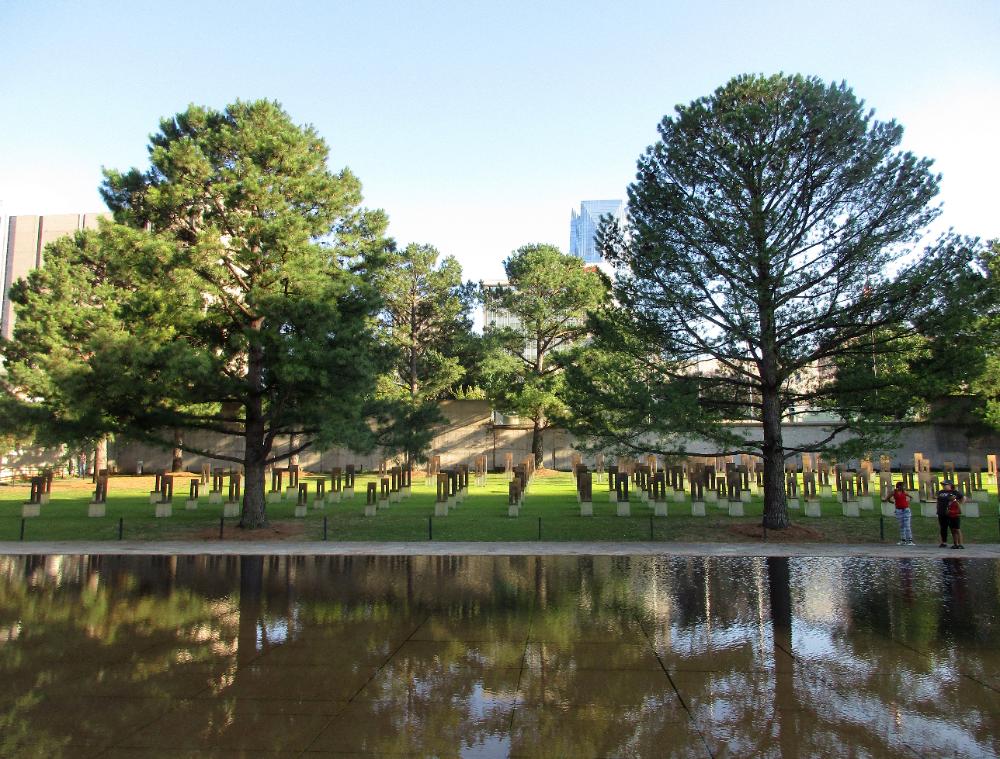
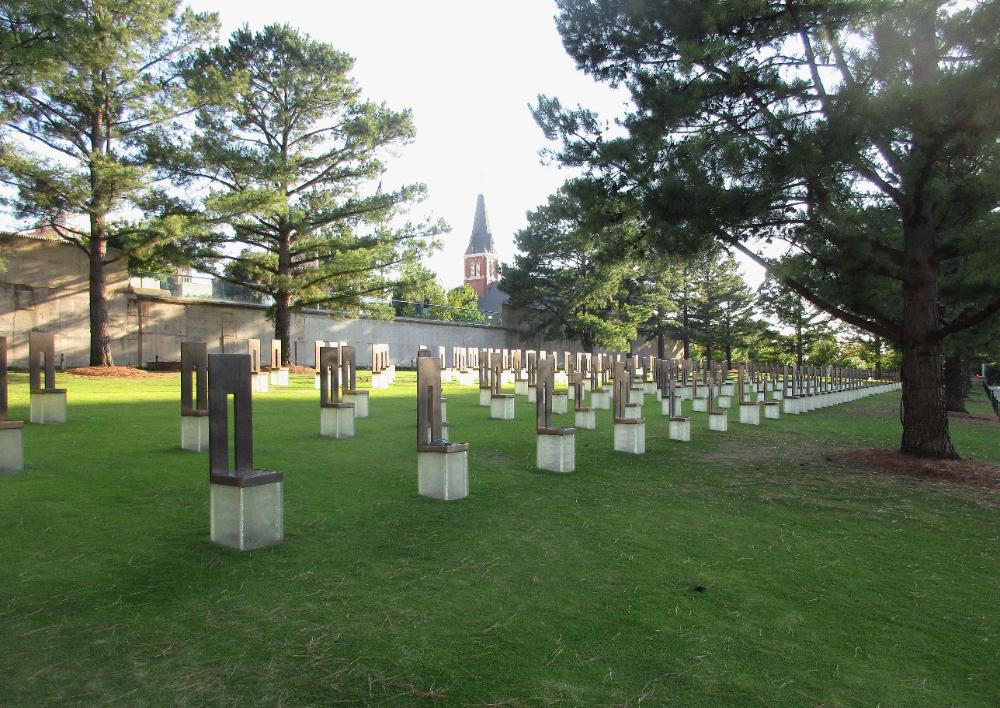
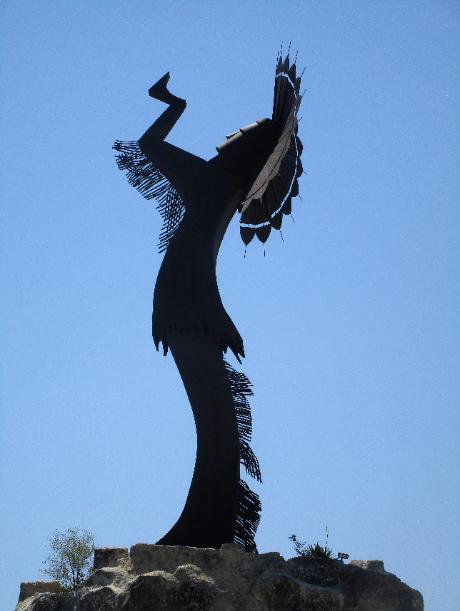
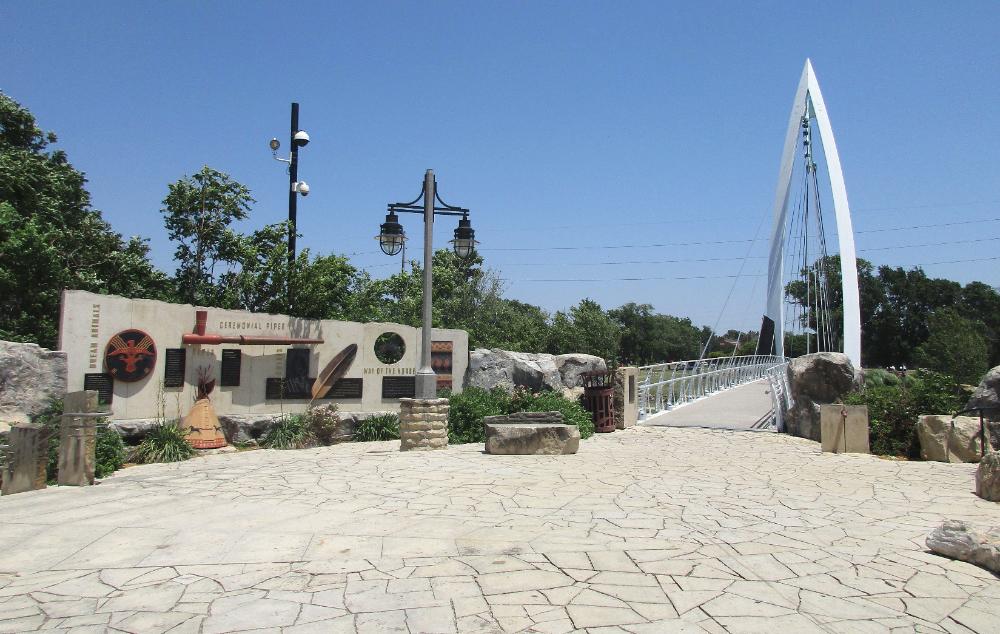
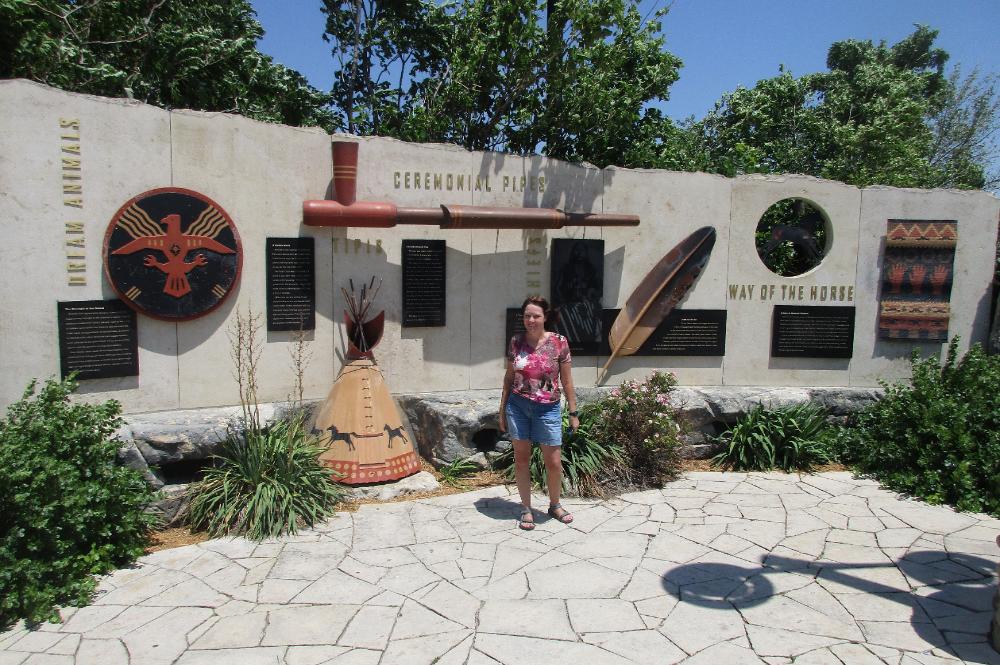
| Horses rear up on the river bank. This was the first sculpture installed, right down to the hoofprints at the water's edge. |
| Oklahoma City, OK & Wichita, KS |
| The land rush begins at noon with a cannon shot |
| The statues dramatically capture the mayhem of those first chaotic moments |
| A man loses his hat -- but there's no stopping now |
| Families in covered wagons surge forward, hoping to stake their claim |
| Half the sculptures are on one side of the river and half on the other. We loved the fact that the bridge is hidden around the corner, so you feel a little stymied when you reach the water's edge. |
| This is the vanguard of the land rush, and you can feel the pure excitement as the would-be settlers charge ahead |
| Now we're on the far side of the river, moving towards the front of the Land Run Monument |
| It's said some 50,000 people rushed into the Unassigned Lands of the Oklahoma Territory -- over two million acres of free land for the taking |
| This photo gives a good sense of how the statues stretch across both sides of the river |
| With Robin standing in front of the country doctor, you can easily see how the statues are 1½ times larger than life |
| Each settler carries a flag so he can claim his stake. As a humorous sidenote, parking was a challenge when we visited because of a baseball game happening nearby. We found someone pulling out of a space but another driver took it before we could, sending her son out of the car to go stand in the space and stake their claim. No doubt she was descended from an Oklahoma sooner! |
| But no matter how fast these riders ride, other settlers -- later dubbed "Sooners" -- beat them to the best lands by sneaking across the border a day or two early |
| The Land Run Monument is in Bricktown near the minor league baseball stadium (park at Bass Pro Shops, 200 Bass Pro Drive) |
| Less than a ten-minute drive away from the Land Run Monument is the Oklahoma City National Memorial. The time on the gate, 9:01, marks the last moment of innocence before the blast. |
| Each chair is a tribute to one of the 168 Americans killed on April 19, 1995 |
| The Field of Empty Chairs is a poignant reminder of lives lost, including children attending kindergarten at the time |
| On most road trips we've driven straight through Kansas without stopping, but this time we paused in Wichita to take in our first Kansas sight ever (unless you count wheat and corn fields) |
| . The Keeper of the Plains is a giant statue of an Indian at the confluence of the Arkansas and Little Arkansas Rivers |
| Besides the statue itself you can enjoy a pleasant walk along the Arkansas River Path on both sides of the water |
| Near the statue is a tribute to Native Americans, located in between the two distinctive pedestrian suspension bridges |
| The plaques about Indian life on the plains are informative, and the quiet beat of a tom-tom from behind the rocks adds to the atmosphere |
| Wichita, Kansas |
| Oklahoma City, Oklahoma |
The Land Run Monument in Oklahoma City
commemorates the exact moment -- noon on
April 22, 1889 -- when the land rush began in
Oklahoma and everyone surged into the open
territory to stake their claims. The statues of the
men, women, and horses are 1½ times bigger
than life and powerfully wrought. There must be
some forty-five statues all told. One of the most
powerful shows two horses rearing up at river's
edge, with the man in the carriage struggling to
regain control. Adding to the sense of realism,
there's no easy way for tourists to cross the
river either -- the bridge is hidden around the
corner -- so the river feels like a real barrier.
On that same evening we paid our respects at
the Oklahoma City Memorial. This is a powerful
reminder of the bombing of the Edward R.
Murrow Building. It has two gates, one with the
time of 9:01 am on it (signifying the last minute
of innocence) and the other 9:03 am (signifying
the beginning of healing). In between, at 9:02
am, is when the bombing occurred. A reflecting
pool stands between the two gates. Alongside it
on a grassy slope are chairs, each signifying a
person who died that day. Smaller chairs are for
the children who attended kindergarten there.
commemorates the exact moment -- noon on
April 22, 1889 -- when the land rush began in
Oklahoma and everyone surged into the open
territory to stake their claims. The statues of the
men, women, and horses are 1½ times bigger
than life and powerfully wrought. There must be
some forty-five statues all told. One of the most
powerful shows two horses rearing up at river's
edge, with the man in the carriage struggling to
regain control. Adding to the sense of realism,
there's no easy way for tourists to cross the
river either -- the bridge is hidden around the
corner -- so the river feels like a real barrier.
On that same evening we paid our respects at
the Oklahoma City Memorial. This is a powerful
reminder of the bombing of the Edward R.
Murrow Building. It has two gates, one with the
time of 9:01 am on it (signifying the last minute
of innocence) and the other 9:03 am (signifying
the beginning of healing). In between, at 9:02
am, is when the bombing occurred. A reflecting
pool stands between the two gates. Alongside it
on a grassy slope are chairs, each signifying a
person who died that day. Smaller chairs are for
the children who attended kindergarten there.
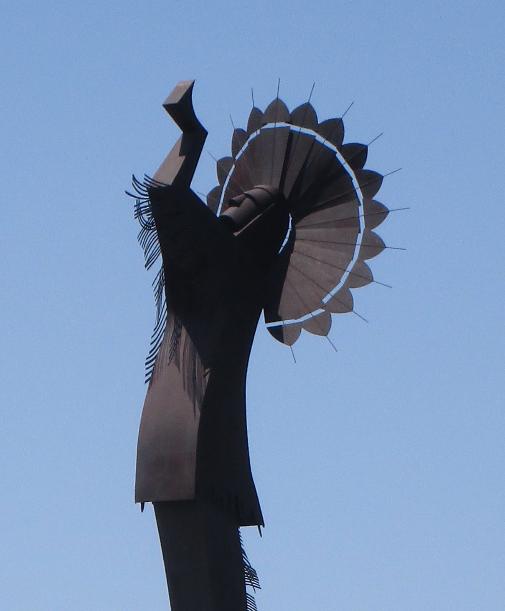
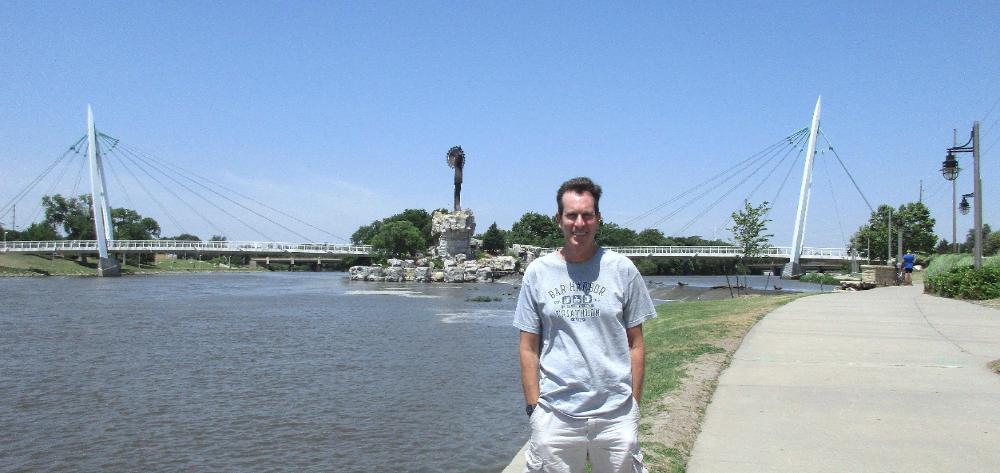
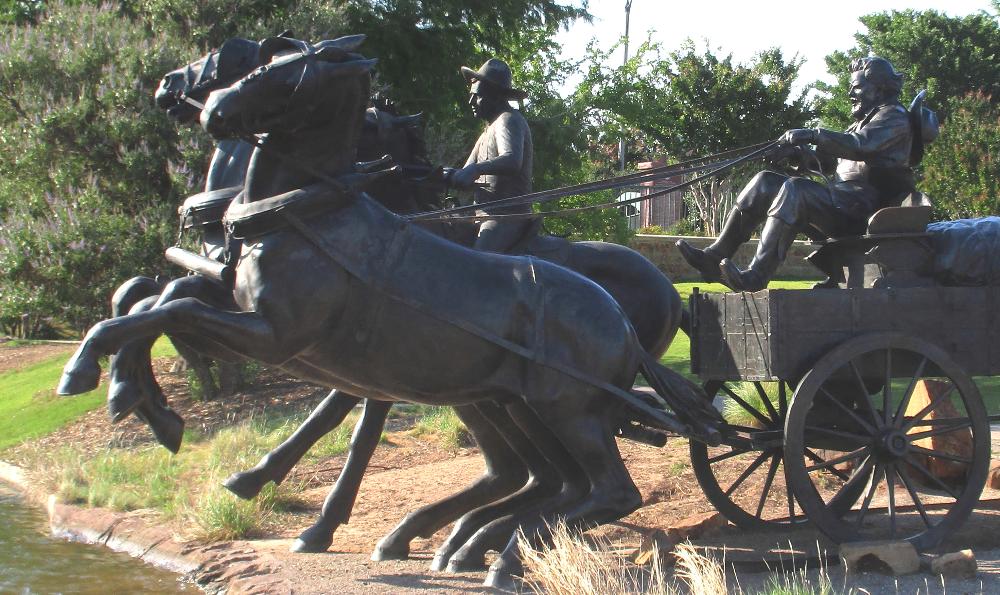
| The model for the wagon driver was none other than the artist himself, Paul Moore |